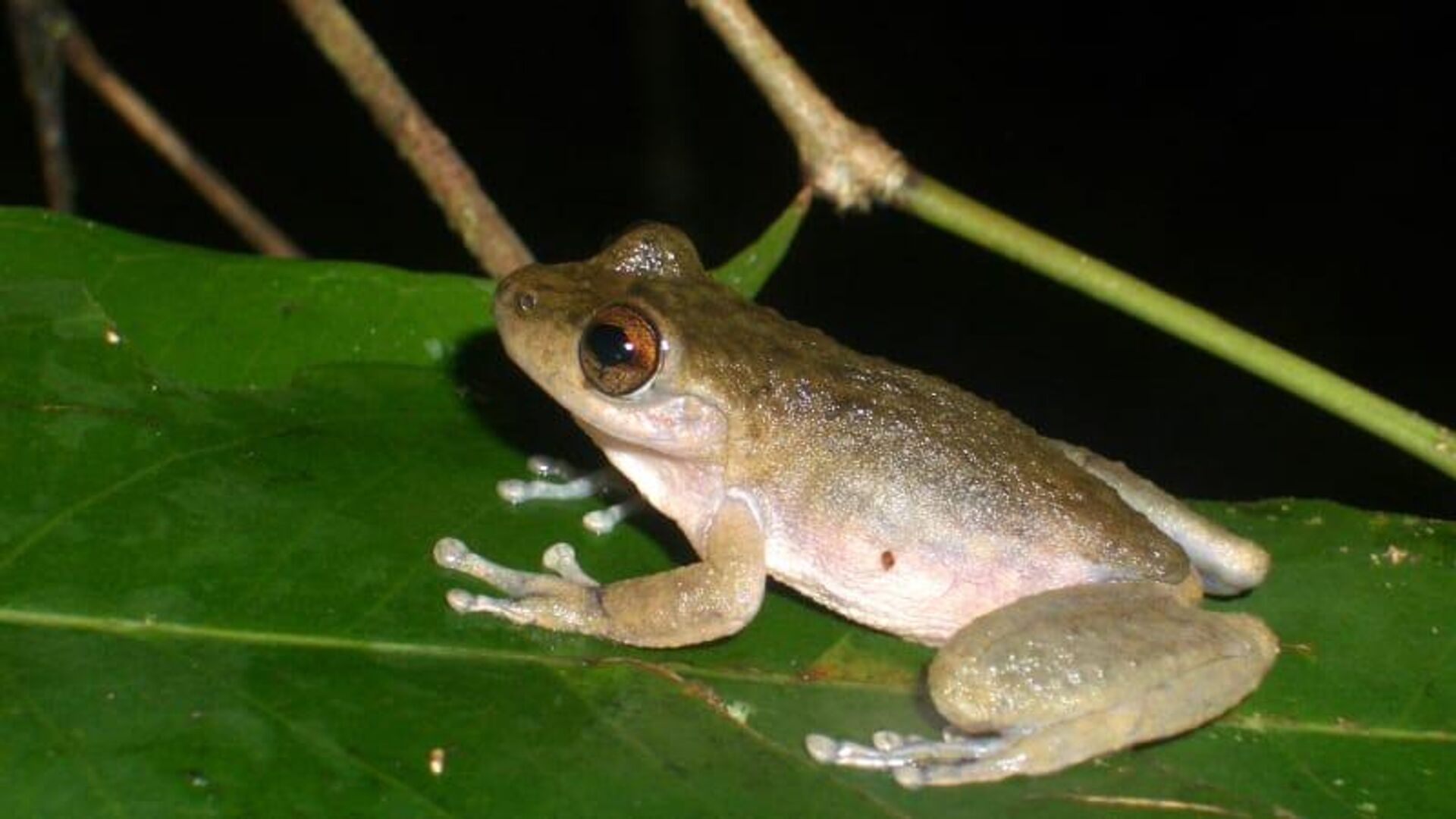https://sputnikglobe.com/20221210/australian-mountain-mist-frog-officially-extinct--1105328170.html
Australian Mountain Mist Frog Officially Extinct
Australian Mountain Mist Frog Officially Extinct
Sputnik International
Australia has one of the highest rates of species decline in the developed world. Experts argue that political action should be taken without delay, including... 10.12.2022, Sputnik International
2022-12-10T14:08+0000
2022-12-10T14:08+0000
2022-12-10T14:08+0000
ecology
frog
extinct species
science & tech
red list
https://cdn1.img.sputnikglobe.com/img/07e6/0c/0a/1105331028_0:0:800:450_1920x0_80_0_0_7be6cad2c11162256ce3478cd09e510d.jpg
The mountain mist frog has been declared extinct on the International Union for Conservation of Nature (IUCN) red list. The frog was last seen in Australia in April 1990. Experts believe that this species was destroyed by chytrid fungus, a disease that attacks the skin, and has inflicted severe damage to amphibian populations all around the globe. However, scientists do not rule out a human factor: rising temperatures driven by the greenhouse effect have reduced the frog's natural habitat.The frog was most commonly seen near Thornton Peak, northwest of Cairns. It reached nearly six centimeters in length, and was usually grey or grey-brown. While the Australian government lists the species as critically endangered, the IUCN changed its status to extinct. Scientists stress the fact that the mist frog had been searched for over the past two decades, but to no avail.However, Dr. Rowley insists that it is important not to lose hope, since there are roughly 40 frog species listed as threatened in Australia, and measures should be taken to secure them.Some experts think that the Australian government is not doing enough, since the country has one of the highest rates of species decline in the developed world. Despite this, they agree that Canberra is moving in the right direction.
Sputnik International
feedback@sputniknews.com
+74956456601
MIA „Rossiya Segodnya“
2022
News
en_EN
Sputnik International
feedback@sputniknews.com
+74956456601
MIA „Rossiya Segodnya“
Sputnik International
feedback@sputniknews.com
+74956456601
MIA „Rossiya Segodnya“
why mountain mist frogs are extinct, ecology, habitat, climate change
why mountain mist frogs are extinct, ecology, habitat, climate change
Australian Mountain Mist Frog Officially Extinct
Australia has one of the highest rates of species decline in the developed world. Experts argue that political action should be taken without delay, including by introducing stronger environmental laws and increasing investment in habitat protection and restoration.
The mountain mist frog has been declared extinct on the International Union for Conservation of Nature (IUCN) red list.
The frog was last seen in Australia in April 1990. Experts believe that this species was destroyed by chytrid fungus, a disease that attacks the skin, and has inflicted severe damage to amphibian populations all around the globe. However, scientists do not rule out a human factor:
rising temperatures driven by the greenhouse effect have reduced the frog's natural habitat.
The frog was most commonly seen near Thornton Peak, northwest of Cairns. It reached nearly six centimeters in length, and was usually grey or grey-brown.
While the Australian government lists the species as critically endangered, the IUCN changed its status to extinct. Scientists stress the fact that the mist frog had been searched for over the past two decades, but to no avail.
“Many have dramatically declined and unfortunately this little guy seems to have disappeared. It is awfully sad. It has been searched for over the last 25 years so it is unlikely that it’s still out there,” Dr. Jodi Rowley, a frog biologist at the Australian Museum and the University of New South Wales, said.
However, Dr. Rowley insists that it is important
not to lose hope, since there are roughly 40 frog species listed as threatened in Australia
, and measures should be taken to secure them.
Some experts think that the Australian government is not doing enough, since the country has one of the highest rates of species decline in the developed world. Despite this, they agree that Canberra is moving in the right direction.
“We know what’s causing this crisis: habitat destruction, invasive species and climate change. We know the solutions to the crisis: stronger environment laws, stronger climate action and increased investment in habitat protection and restoration,” Jess Abrahams, a nature campaigner with the Australian Conservation Foundation, argued.

